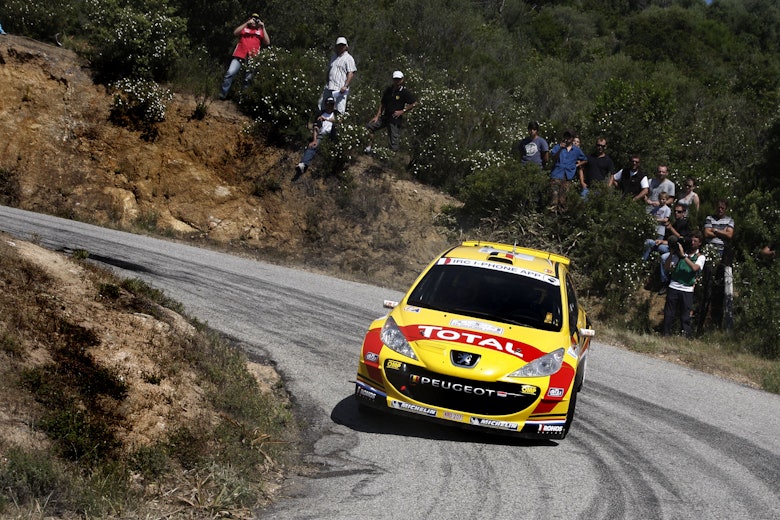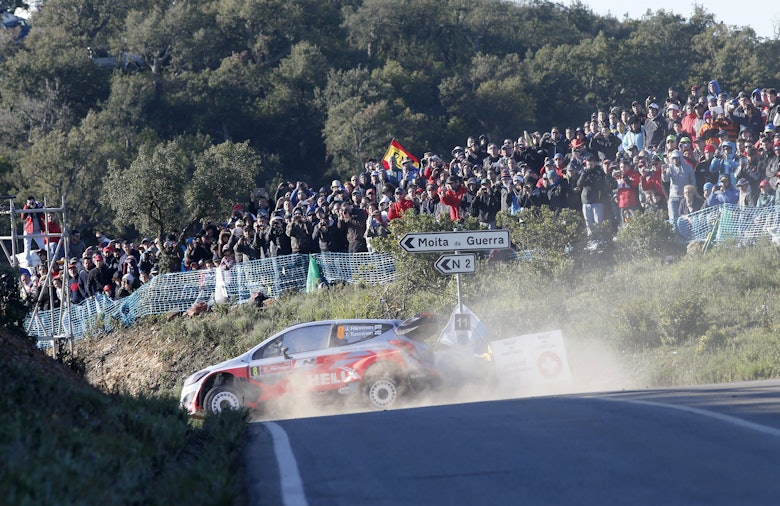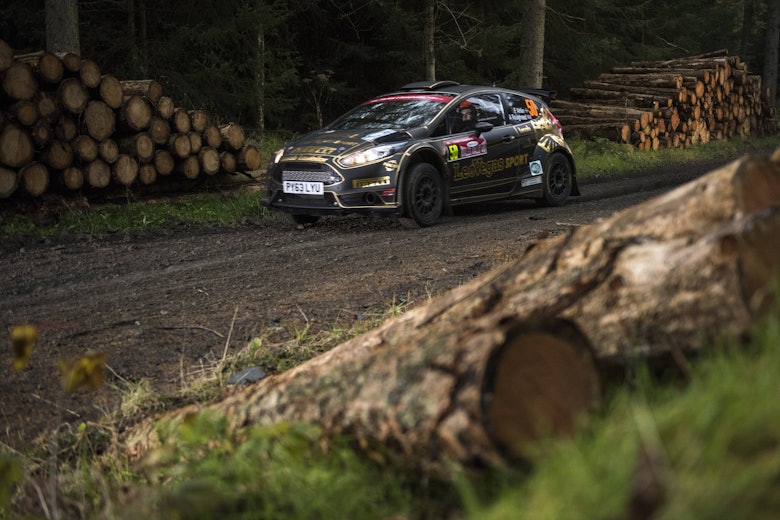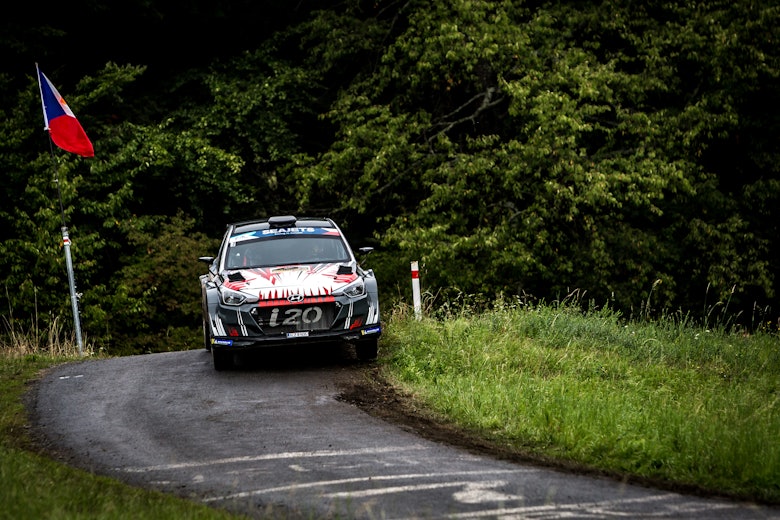You’re an aspirational young driver with the budget to drive an R5 car. Where do you go? The European Rally Championship, or the World Rally Championship’s WRC 2 or WRC 3 support categories?
Granted, as predicaments go this one is rather luxurious, but it’s a very real choice that several drivers across the world face and the decision is not as straightforward as it may seem. Quite often what may work for one driver won’t work for another, and each will have to work out their own optimum route to reach rallying’s upper echelon.
This is where rallying has always stood alone in the global sphere of motorsport with no designated route to success. Unlike single-seater racing, where there’s Formula 4, Formula 3 and Formula 2 on the way to Formula 1, rallying has various championships that sit on a level pedestal; although with its new class structure stretching from Rally1 to Rally5, the FIA is making efforts to change this. And it can certainly be argued that the WRC’s current R5 category has helped to streamline affairs in recent years.
Looking at the current crop of WRC drivers and examining where they came from goes some way to illustrate this. Of the 12 drivers that will drive a top flight factory car this term, two thirds have progressed from the WRC’s second tier, whether that be WRC 2, WRC 2 Pro or the SWRC. The remaining four – Sébastiens Ogier and Loeb, Thierry Neuville (pictured below) and Dani Sordo – either came straight from two-wheel-drive cars in the JWRC or the now defunct Intercontinental Rally Challenge (IRC).

The IRC’s merger into the ERC is a critical factor in Eurosport Events’ series perhaps falling behind the WRC’s counterpart, as in the period between 2010-12 the IRC was the place to be.
“I think we can all call this a little bit the golden years,” 2011 and 2012 IRC champion Andreas Mikkelsen tells DirtFish. “I remember IRC being very special and being a major championship.
“The big WRC teams took drivers from the IRC into the WRC programme later [as well]. You don’t see so many teams now taking drivers from the ERC, they take drivers from WRC 2. So, yeah, I do believe IRC at that time had the best drivers in the Super 2000 cars, or the lower category, but I feel now the best drivers in R5 cars you’ll find them in WRC 2. That’s my personal feeling, so I’m not saying it [necessarily] is like that.”
In its short seven-year existence, the IRC helped elevate Mikkelsen, Neuville, Kris Meeke and Juho Hänninen into the WRC. Mikkelsen and Meeke went on to win numerous rallies, while Neuville has challenged for multiple titles.

Hänninen is a unique case in that he won both the IRC and the SWRC, in 2010 and 2011 respectively, but he would have to wait until 2014 until his WRC chance came with Hyundai.
“I would say that IRC was tougher, mainly because it was such different rallies [in] different countries and at the same time there was always some local guys who were really fast which didn’t happen in SWRC,” Hänninen tells DirtFish.
“In SWRC we mainly drove with Ott [Tänak], it was a lot of fights with Ott but in the IRC there were plenty of guys like Thierry and Kris, [Jan] Kopecky and Guy Wilks and Freddy [Loix] on the Tarmac so from that side the tougher competition [was] in the IRC. For me, still I have a feeling that when I won the 2010 IRC that’s like my best part of my career.”
The ERC is a great championship with great exposure, and rallies like Azores and Barum are awesome. But where’s the next step?Rhys Yates, M-Sport WRC 2 driver
Eurosport’s live television coverage certainly helped attract manufacturers to the IRC as, at the time, it changed the game in how rallying was broadcast. But now up against WRC’s All Live offering, this same advantage isn’t enjoyed.
With the majority of WRC hotshots and manufacturer teams choosing to contest the world championship’s support series, the ERC has struggled to create the buzz that the IRC once did. Both Škoda and Peugeot stuck with the ERC when it initially succeeded the IRC, with Kopecky and Esapekka Lappi bagging the 2013 and 2014 titles in a Fabia S2000. Peugeot fielded Craig Breen, Kevin Abbring and Stephane Lefebvre once in its 208 T16 R5 for a few years too but it headed for the exit door in 2016, a year after Škoda.

By this point WRC 2 had really taken off, attracting more manufacturers year on year as the R5 formula soared in popularity. Škoda has bagged every title since 2016 with Lappi, Pontus Tidemand, Kopecky and Kalle Rovanperä, while M-Sport Ford, Hyundai and Citroen all still run cars in the category. By comparison, every single ERC champion since 2015 has driven a privately entered car.
“If you want to be a WRC driver, you need to do WRC. I don’t know if anyone’s ever gone straight into a World Rally Car from winning the ERC,” says M-Sport WRC 2 driver Rhys Yates.
“The ERC is a great championship with great exposure and some of the rallies like Azores and Barum [in particular] are awesome. But where’s the next step? The ERC is a great stepping stone from a national championship to [the] world championship but it is a stepping stone in my opinion.
“That isn’t belittling the ERC, that’s just where it is,” Yates, who contested ERC rounds in 2018, adds.
“It’s super competitive. Look at Dani Sordo in Barum [in 2018, below]. [He] went to Barum and finished third; fair play, he doesn’t drive an R5 that much, but he is a factory winning Hyundai driver. He didn’t go in there and wipe the floor with everyone.”

Yates’ fundamental argument does bear fruit though, as since Lappi’s 2014 title win, no ERC champion has reached the WRC. Kajetan Kajetanowicz is in WRC 3, Alexey Lukyanuk is still in ERC and Chris Ingram is currently balancing the pros and cons of where to go next.
“I’m actually looking at both ERC and WRC,” admits Ingram. “Toksport would like me to go and win the ERC again but I’m keen to break into the WRC because that’s the only thing I’m missing to be honest. I just need to go and learn those [WRC] rallies. Toksport have entered in WRC 2, so ideally the plan is to do a few rounds of WRC 2 [later this year].”
What seems clear, then, is that to reach the very top of rallying, you need to be in WRC 2 or at the very least have some base experience of WRC competition and events. But that isn’t to say that the ERC isn’t also a worthy route.
Motorsport Ireland and Hyundai Customer Racing have clearly seen something in it, with Callum Devine’s 2020 program tipped to start a slipstream of drivers following suit. After all, a season or two against Europe’s best affords a driver the chance to learn about different rallies and stage characteristics, and even pick up some prize money should they win the ERC1 Junior title.
But perhaps most pertinently, you get to be, in Ingram’s words “a big fish in a smaller pond” rather than a “tiny fish in a medium pond”. Driving in the ERC means driving at the very front of a rally and fighting for an overall rally win, rather than driving as the support act. That’s something no rally driver enjoys turning down.
So it’s really time for a mindset change. Instead of viewing the ERC and WRC 2 or 3 as direct competitors, perhaps they should be seen as alternatives instead. As that’s exactly how the ERC wants to position itself.
Both the ERC and WRC 2 and 3 are more than capable of preparing a driver for their dream WRC drive, because after all that’s up to the driver, not the series they’re competing in. There is no confirmed route to greatness in rallying, and long may that continue.





